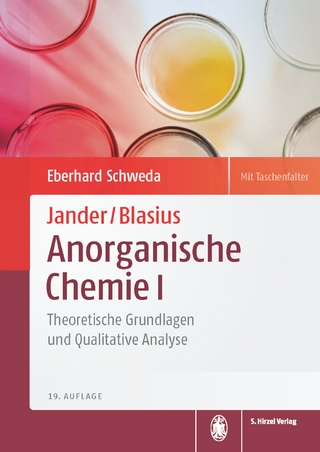
Solid Hydrogen
Kluwer Academic/Plenum Publishers (Verlag)
978-0-306-41080-2 (ISBN)
- Titel ist leider vergriffen;
keine Neuauflage - Artikel merken
The solid hydrogens are dominated by quantum effects, the most out- standing property being that the rotation of the molecules is free down to the lowest temperatures, in the sense that the rotational quantum number J characterizing the rotational motion of the free molecules remains a good quantum number in all of the solid-state phases except at ultrahigh pressures.
1. Properties of Isolated Hydrogen Molecules.- 1.1 The Adiabatic Approximation.- 1.2 The Rotation-Vibration States.- 1.3 The Molecular Multipole Moments and Polarizabilities.- 1.4 The Dunham Model.- 1.5 Nuclear Symmetry Species for Homonuclear Molecules.- References.- 2. The Intermolecular Interaction.- 2.1 Definition of the Intermolecular Interactions.- 2.2 The Long-Range Intermolecular Interactions.- 2.3 The Short-Range Intermolecular Interactions.- 2.4 Models for the Pair Potential.- References.- 3. Pure Vibrational Excitations.- 3.1 The fcc and hcp Structures.- 3.2 Single-Molecule Perturbations.- 3.3 Vibrational Energy Bands.- 3.4 Localized Vibrational States.- 3.5 The Vibrational Raman Spectrum.- References.- 4. Rotational Excitations in J = 0 Solids.- 4.1 Crystal-Field Interactions.- 4.2 Pure Rotational Excitations.- 4.2.1 The J= 2 Band in an fcc Lattice.- 4.2.2 The J = 2 Band in an hcp Lattice.- 4.2.3 The Rotational Energy Bands in Solid HD.- 4.2.4 Multiple Rotational Excitations.- 4.3 Mixed Rotation-Vibration Excitations.- 4.3.1 The S1(0) and Q1(0) + S0(0) Manifolds.- 4.3.2 The S1(0)+ S1(0) Manifold.- 4.4 Rotation Raman and Infrared Spectra.- 4.4.1 Theoretical Foundations.- 4.4.2 Pure Rotation Spectra.- 4.4.3 Mixed Rotation-Vibration Spectra.- References.- 5. Lattice Vibrations and Elastic Properties.- 5.1 Lattice Vibrations in the Harmonic Approximation.- 5.2 Lattice Vibrations in Quantum Crystals.- 5.2.1 Calculation of the Ground-State Energy.- 5.2.2 Nature of the Elementary Excitations.- 5.3 Elastic Properties and the Anisotropic Debye Model for the hcp Lattice.- 5.4 Two-Particle Distribution Functions and Correlation Matrices.- References.- 6. Single J = 1 Impurities in J = 0 Solids.- 6.1 Crystal-Field Interactions in a Rigid Lattice.- 6.2 Effect of Static Phonon Renormalization.- 6.3 Dynamic Crystal-Field Effects.- 6.4 Specific Heat and NMR Properties.- References.- 7. Clusters of J = 1 Impurities in J = 0 Solids.- 7.1 Models for Cluster Distributions.- 7.2 Properties of Isolated Clusters.- 7.3 Spectroscopy of nn Pairs of J = 1 Molecules.- 7.4 Finer Details of the nn Pair Interaction.- 7.5 Interactions between More Distant Neighbors.- References.- 8. The Ordered Phases.- 8.1 Orientational and Structural Phase Changes.- 8.2 The Four-Sublattice Structure of Pure J = 1 Solids.- 8.3 The Order-Disorder Transition in the fcc Solids.- 8.3.1 The Molecular-Field Approximation.- 8.3.2 Effect of Short-Range Correlations.- 8.4 Librons in Pure J = 1 Solids.- 8.5 J = 0 Impurities in J = 1 Solids.- 8.6 Ordering in J = 0 Solids at Ultrahigh Pressures.- References.- 9. Rotation Diffusion and Ortho-Para Conversion.- 9.1 Ortho-Para Conversion Processes.- 9.2 Rotation Diffusion at Small J = 1 Concentrations.- 9.2.1 Diffusion of Single J = 1 Impurities at Finite Concentrations.- 9.2.2 Diffusion of nn Pairs of J = 1 Impurities.- 9.3 Rotation Diffusion at Small J = 0 Concentrations.- 9.4 Experimental Results on Rotation Diffusion.- References.- Appendix A. Spherical Tensor Formalism.- Appendix B. Lattice Sums.
| Erscheint lt. Verlag | 1.1.1983 |
|---|---|
| Zusatzinfo | biography |
| Sprache | englisch |
| Themenwelt | Naturwissenschaften ► Chemie ► Analytische Chemie |
| Naturwissenschaften ► Chemie ► Anorganische Chemie | |
| Naturwissenschaften ► Physik / Astronomie ► Festkörperphysik | |
| ISBN-10 | 0-306-41080-X / 030641080X |
| ISBN-13 | 978-0-306-41080-2 / 9780306410802 |
| Zustand | Neuware |
| Haben Sie eine Frage zum Produkt? |
aus dem Bereich


